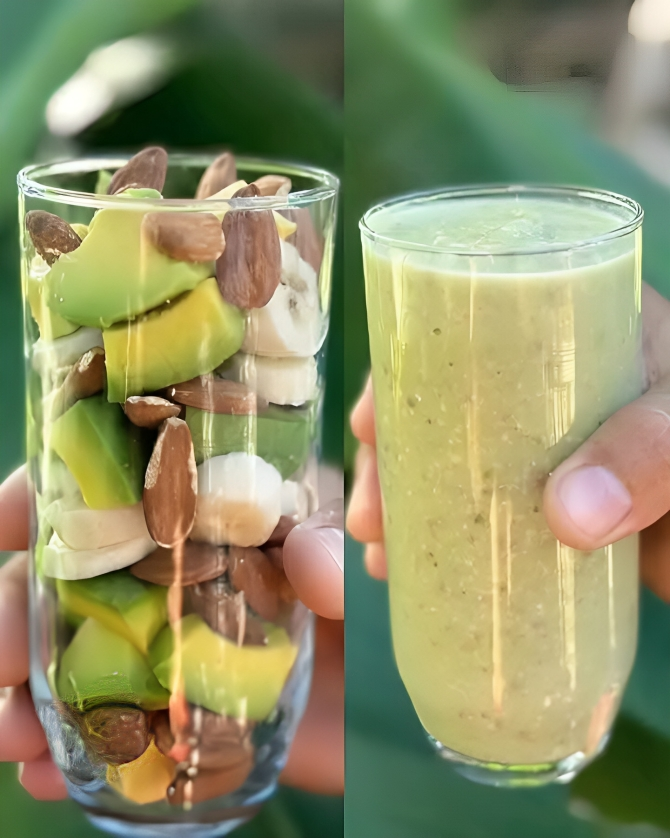Stinging Nettle: The Most Nutritious Plant on Earth? Discover Its Benefits + A Delicious Nettle Soup Recipe

Stinging nettle may not be the most glamorous plant out there, but don’t be fooled by its prickly exterior. For centuries, this wild, green plant has been celebrated for its incredible nutritional value and medicinal properties. From being a powerful source of vitamins and minerals to aiding in reducing inflammation, nettle has earned a place in natural health circles as a superfood.
In this blog post, we’ll explore the many health benefits of stinging nettle and share a simple recipe for a nourishing and delicious nettle soup that you can enjoy at home.
Why Is Stinging Nettle So Nutritious?
Stinging nettle (Urtica dioica) is often regarded as a nutritional powerhouse because of its impressive nutrient profile. Despite its sting when touched, once harvested and cooked, nettle becomes a super-nutritious, edible plant that’s packed with vitamins, minerals, and other beneficial compounds.
Nutritional Content of Nettle:
- Vitamins: High in vitamins A, C, D, E, and K, as well as several B vitamins
- Minerals: Rich in iron, magnesium, calcium, potassium, phosphorus, and zinc
- Protein: Nettle leaves contain all nine essential amino acids, making it a great plant-based protein source
- Antioxidants: Contains polyphenols, carotenoids, and flavonoids that help fight oxidative stress and inflammation
- Fiber: Good source of fiber for improved digestion
Health Benefits of Stinging Nettle
The nutritional density of stinging nettle gives it a wide range of health benefits:
1. Rich Source of Iron and Supports Blood Health
Nettle is an excellent plant-based source of iron, making it particularly beneficial for those who struggle with anemia or low iron levels. The iron, combined with its high vitamin C content (which helps with iron absorption), can boost energy levels and improve blood circulation.
2. Reduces Inflammation
Stinging nettle contains powerful anti-inflammatory compounds that can help reduce symptoms of conditions like arthritis, joint pain, and allergies. Studies have shown that nettle may help decrease the production of inflammatory hormones in the body.
3. Supports Bone Health
Nettle is a rich source of calcium and magnesium, which are essential for maintaining strong bones. Its vitamin K content further supports bone density and may help reduce the risk of osteoporosis.
4. Aids in Detoxification
Nettle is a natural diuretic, helping to flush toxins from the body by increasing urine production. This makes it great for kidney and urinary tract health.
5. Boosts the Immune System
Packed with vitamin C, antioxidants, and other immune-boosting nutrients, nettle strengthens the body’s defenses, helping to ward off infections and improve overall health.
6. Supports Respiratory Health
Nettle has traditionally been used to treat respiratory conditions such as hay fever, asthma, and allergies. Its anti-inflammatory properties can help reduce allergy symptoms and improve lung function.
Foraging and Preparing Stinging Nettle
If you’re planning to forage for stinging nettle, it’s important to know how to handle it. The tiny hairs on its leaves and stems contain compounds that can irritate the skin and cause a stinging sensation. However, once nettle is cooked, dried, or blended, the stingers are neutralized, and it’s perfectly safe to eat.
Tips for Foraging Nettle:
- Wear gloves when harvesting stinging nettle to avoid its sting.
- Look for young, tender leaves as they have the best flavor and texture.
- Avoid foraging near roadsides or polluted areas.
Nettle Soup Recipe: A Nutritious and Comforting Dish
One of the easiest and tastiest ways to enjoy stinging nettle is by making a simple nettle soup. This nutritious and comforting dish is packed with vitamins, minerals, and protein, making it the perfect addition to your diet.
Ingredients:
- 4 cups fresh stinging nettle leaves (rinsed and stems removed)
- 1 tablespoon olive oil or butter
- 1 medium onion (chopped)
- 2 garlic cloves (minced)
- 1 large potato (peeled and chopped)
- 4 cups vegetable or chicken broth
- 1 cup spinach (optional, for extra greens)
- Salt and pepper to taste
- 1 tablespoon lemon juice (optional, for brightness)
- A dollop of sour cream or yogurt (for garnish)
Method:
- Prepare the Nettle Leaves: Wearing gloves, rinse the nettle leaves thoroughly to remove dirt or insects. Remove the stems, as only the leaves will be used. Set the leaves aside.
- Sauté the Vegetables: In a large pot, heat the olive oil or butter over medium heat. Add the chopped onion and garlic, and sauté for about 5 minutes, until softened and fragrant.
- Add the Potato and Broth: Add the chopped potato to the pot and pour in the vegetable or chicken broth. Bring the mixture to a boil, then reduce the heat to a simmer. Let it cook for about 10-15 minutes, or until the potatoes are tender.
- Add the Nettle Leaves: Carefully add the nettle leaves and spinach (if using) to the pot. The leaves will wilt quickly, similar to spinach. Cook for an additional 5 minutes until the nettles are tender and vibrant green.
- Blend the Soup: Using an immersion blender or a regular blender, blend the soup until it reaches your desired consistency. You can make it smooth or leave a few chunks for texture.
- Season and Serve: Season the soup with salt, pepper, and a squeeze of lemon juice if desired. Serve warm with a dollop of sour cream or yogurt for extra creaminess.
How to Use Nettle in Other Ways
In addition to soup, there are several ways to incorporate nettle into your diet:
- Nettle Tea: Steep dried nettle leaves in hot water for a nourishing, anti-inflammatory tea that supports detoxification and reduces allergy symptoms.
- Smoothies: Blend fresh nettle into your smoothies for a boost of vitamins and minerals. Its flavor is mild and easily blends with fruits like bananas and berries.
- Pesto: Make a vibrant nettle pesto by blending fresh nettle with garlic, nuts, parmesan cheese, and olive oil. Use it as a spread, dip, or sauce for pasta.
- Sauteed Greens: Sauté nettle leaves with olive oil, garlic, and a pinch of salt for a simple side dish, just as you would spinach or kale.
Conclusion: Stinging Nettle—A Superfood Worth Adding to Your Diet
Stinging nettle may be a humble, wild plant, but its extraordinary nutritional profile and health benefits make it a superfood worth considering. Whether you’re looking to boost your immune system, improve bone health, or simply add more nutrient-dense greens to your diet, nettle is a fantastic choice.
Try foraging for fresh nettle and experimenting with different ways to prepare it. Our simple and delicious nettle soup recipe is a great way to start, but nettle can be added to smoothies, teas, or even turned into pesto. The possibilities are endless!
Disclaimer: Always consult a healthcare provider before using stinging nettle as a remedy, especially if you are pregnant, nursing, or have any pre-existing health conditions.





